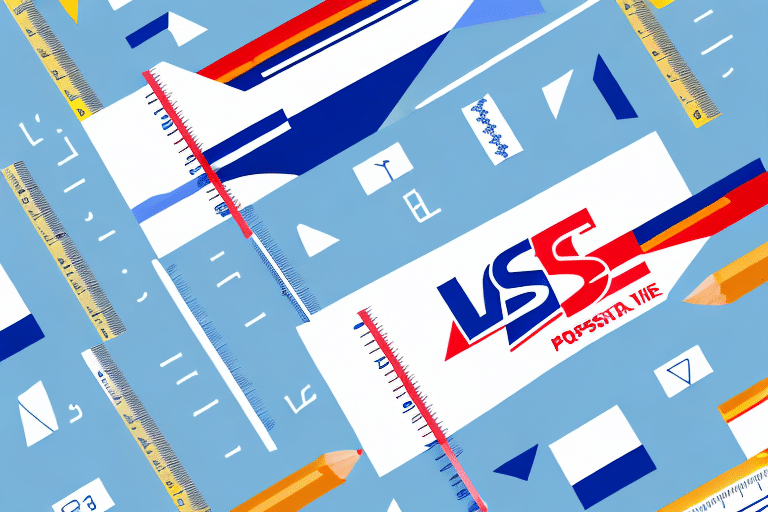What Is the Maximum Package Size for USPS Shipping?
When it comes to USPS shipping, understanding the maximum package size is crucial to avoid costly mistakes and delays. In this comprehensive guide, we explore everything you need to know about USPS package size limitations for both domestic and international shipping. We cover the factors that determine size limits, the consequences of exceeding them, and provide tips for packing and saving money on shipping costs.
Understanding USPS Shipping Guidelines
Knowing the USPS shipping guidelines ensures that your package arrives safely and on time. The maximum package size allowed by USPS depends on various factors, including the destination, service type, and package weight. Generally, USPS divides packages into three categories:
- Large Packages: Up to 70 lbs and a combined length and girth of up to 130 inches
- Medium Packages: Up to 20 lbs and a combined length and girth of up to 108 inches
- Small Packages: Up to 16 oz and a combined length and girth of up to 84 inches
These limits apply to most USPS services, including First-Class Mail, Priority Mail, Priority Mail Express, and Parcel Select Ground. However, specific services may have additional restrictions, which are covered below.
Special Considerations for Hazardous Materials
USPS has specific guidelines for shipping hazardous materials, such as flammable liquids, explosives, and radioactive materials. These items require special packaging and labeling and may only be shipped using certain USPS services, such as Priority Mail Express or Priority Mail Express International. Additionally, some items may be prohibited from shipping altogether, including illegal drugs, firearms, and perishable foods. Always check the USPS hazardous materials guidelines or consult with a USPS representative to ensure your package meets all necessary requirements.
USPS Package Restrictions for Domestic and International Shipping
USPS imposes specific limitations on package sizes for both domestic and international shipping. For example:
- First-Class Mail International: Maximum weight of 4 lbs and a maximum value of $400
- Priority Mail International: Up to 70 lbs and a combined length and girth of up to 108 inches
- Priority Mail Express International: Up to 70 lbs and a combined length and girth of up to 79 inches
In addition to size limitations, USPS restricts the types of items that can be shipped. Hazardous materials, firearms, and animals are generally prohibited. Always review the USPS international shipping regulations before sending any package.
Destination Country Restrictions
USPS also enforces restrictions based on the destination country. Some countries prohibit the import of certain food items or electronics, and may require additional documentation or customs fees. It's essential to research the specific regulations of the destination country using the USPS international mailing guidelines to avoid delays or issues with your shipment.
Determining the Maximum Size for Your USPS Package
To determine the maximum size for your USPS package, follow these steps:
- Measure the length, width, and height of the package.
- Add the two smallest dimensions and the largest dimension together. This total is the combined length and girth.
If your package exceeds the maximum allowed for your destination and service type, consider choosing a different USPS service or splitting your shipment into multiple packages.
Keep in mind that the maximum size may also depend on the package's weight. Verify the weight and size restrictions for each USPS service on the USPS website or by contacting customer service. For international shipments, also consider the destination country's customs regulations, which may impose additional size or weight restrictions.
Factors Affecting the Maximum Package Size for USPS Shipping
Several factors influence the maximum package size for USPS shipping:
- Service Type: Different USPS services have varying size and weight limits.
- Destination: Domestic and international destinations have different restrictions.
- Package Shape: USPS has guidelines on acceptable package shapes. Packages that are too long and narrow or too short and wide may be rejected.
- Distance Traveled: Shipping to remote locations like Alaska, Hawaii, or Puerto Rico may have different size limits.
Ensure your package meets USPS shape guidelines by avoiding bulges or odd shapes and by properly packing and securing the contents.
Consequences of Exceeding USPS Package Size Limits
Exceeding the maximum package size for USPS shipping can lead to several issues:
- Rejection: USPS may refuse to accept your package if it doesn't meet size requirements.
- Additional Fees: Oversized packages may incur extra charges.
- Delays: Packages exceeding size limits may be held by customs or returned to the sender.
- Damage: Larger packages are more susceptible to damage during transit due to increased movement and handling.
To avoid these problems, always adhere to USPS size guidelines and properly package your items.
USPS Flat Rate Boxes: A Convenient Option for Shipping Large Items
USPS Flat Rate Boxes offer a convenient and cost-effective option for shipping large, heavy, or dense items at a flat rate, regardless of weight or distance. These boxes come in various sizes and shapes, allowing you to ship everything from documents to skis, up to 70 lbs. However, it's essential to use the official USPS Flat Rate packaging to qualify for the flat rate pricing.
Benefits of Using Flat Rate Boxes
- Predictable Costs: Flat rate pricing helps you save money, especially for heavy or long-distance shipments.
- Free Tracking and Insurance: Most Flat Rate services include free tracking and insurance up to $50.
- Convenience: USPS offers free package pickup services, allowing you to schedule a pickup online without leaving your home or office.
For more information on USPS Flat Rate Boxes, visit the USPS Flat Rate page.
Tips for Packing Your USPS Shipment to Meet Size Requirements
To ensure your package meets USPS size requirements, consider the following tips:
- Accurate Measurements: Use a measuring tape to measure your package's dimensions precisely.
- Proper Packaging Materials: Use sturdy materials to protect your items and prevent shifting during transit.
- Avoid Bulges: Ensure your package has a regular shape without bulges or odd extensions that could increase its size.
- Use USPS Packaging: Consider using USPS-provided packaging, such as Flat Rate boxes, to simplify sizing.
Additionally, always weigh your package using a reliable scale to confirm that it falls within the weight limits for your chosen shipping method. Accurate weight and measurements help prevent unexpected fees or delays.
How to Save Money on Shipping Costs with USPS Carrier Services
There are several strategies to reduce shipping costs with USPS:
- Select the Appropriate Service: Choose the USPS service that best fits your package's size and weight to avoid overpaying.
- Use Online Services: Utilize USPS online services like Click-N-Ship to save on postage costs.
- Take Advantage of Discounts: Look for USPS shipping discounts and promotions, including seasonal offers and coupon codes.
- Utilize Flat Rate Options: Shipping heavy items with Flat Rate boxes can be more economical than traditional postage rates, especially for long-distance shipments.
- Schedule Free Package Pickup: Use USPS's free package pickup service to save time and transportation costs.
By implementing these cost-saving measures, you can ensure your shipments are delivered on time while staying within your budget.
Conclusion: Navigating USPS Shipping Limits and Maximizing Your Shipment Potential
Understanding USPS shipping limits is essential for anyone who regularly sends or receives packages. Familiarity with package size limitations, restrictions, and requirements helps you avoid costly mistakes, delays, and penalties. By following the guidelines, tips, and strategies outlined in this guide, you can maximize your shipping potential and save money on shipping costs.
Remember that USPS offers various shipping options, each with its own set of limitations and requirements. For instance, Priority Mail Express has different weight and size limits than Priority Mail. Additionally, USPS's flat-rate shipping options can be a cost-effective choice for certain packages.
Finally, consider exploring alternative shipping options, such as using different carriers or shipping services that offer discounted rates. By researching and comparing your options, you can ensure you are getting the best possible shipping rates and optimizing your shipment's success.






















